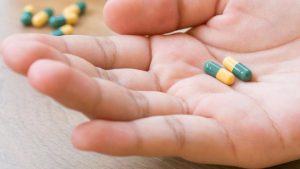How To Do Tramadol Detox Safely
Tramadol is an opioid painkiller popular for its less addictive potential compared to Schedule II controlled opioid substances such as Oxycodone and Hydrocodone.
Most doctors regard it as a safe option for pain management. A particular study shows that among at least 500,000 patients, 75% of them received Tramadol as a take-home prescription.
However, it was only in 2014 that the FDA classified the substance as a Schedule IV controlled drug due to the numerous reports about its misuse. In 2020, statistics show that more than 1.5 million people in the United States have misused the drug.
How Addictive Is Tramadol
 When you take Tramadol for several weeks as prescribed by your doctor, it is likely for you to develop physical dependence. This means you can experience withdrawal symptoms when you quit taking the drug. Later on, your doctor can help you develop a detox plan when you no longer need Tramadol for your pain.
When you take Tramadol for several weeks as prescribed by your doctor, it is likely for you to develop physical dependence. This means you can experience withdrawal symptoms when you quit taking the drug. Later on, your doctor can help you develop a detox plan when you no longer need Tramadol for your pain.
However, when you have been taking Tramadol to experience euphoria, specifically by taking high doses or using it in conjunction with other substances such as alcohol, you are prone to develop an addiction to the drug. If this is the case, you have to reach out to a medical expert and have yourself assessed.
The initial step in detoxing is identifying the level of your addiction. Experts use a set of criteria that can classify your condition as mild, moderate, or severe. By then, you can decide on the best detox care that can cater to your needs.
Basically, the most important factor in achieving a safe detox is to seek medical supervision. Medical experts are valuable in reducing withdrawal discomfort and preventing relapse.
Why Is Detox Necessary?
 Detox is the only way to make yourself get past the control that the substance’s influence takes in your life. With physical dependence present in your system, it will be difficult for you to function normally without the presence of the drug.
Detox is the only way to make yourself get past the control that the substance’s influence takes in your life. With physical dependence present in your system, it will be difficult for you to function normally without the presence of the drug.
On top of that, you can develop tolerance and over a while, your body will constantly crave higher doses, making you more vulnerable to a fatal overdose. In 2020, almost 75% of drug overdose deaths were caused by opioids, particularly synthetic opioids like Tramadol.
Ignoring the signs that tell you that you need to detox immediately may only cause more harm to yourself in the long run. Tramadol use also comes with side effects such as nausea and vomiting.
There are also ones that can lead to death, especially when extremely high doses or polysubstance abuse is involved. Seizures and serotonin syndrome are the common fatal side effects.
Is Tramadol Detox Dangerous
The risks that come with detoxing an addictive substance are always unpredictable. Despite the idea that Tramadol is less potent, fatal conditions are possible, although rare. If you detox with medical supervision, you will be safe in the hands of medical experts.
A safe detox begins with an accurate assessment of your condition. You have to be honest with your doctor about your overall health, how you have used the drug, and for how long. This will help them gauge the best detox care that suits them. Other key steps in detoxing safely include the following.
Taper off your doses
Your doctor will help you identify the initial dose to start your taper schedule. You cannot just suddenly quit taking the drug. This can lead to a huge intensity of pain when the substance wears off in your body.
Your doctor will constantly assess your response to every new dosage. Sometimes, they have to increase or decrease depending on their effect on your body. Typically, experiencing withdrawal symptoms from Tramadol lasts for at least a week.
Follow prescriptions correctly
 Your doctor may prescribe you over-the-counter medicines to relieve specific withdrawal symptoms such as headache or muscle pain, or nausea and vomiting.
Your doctor may prescribe you over-the-counter medicines to relieve specific withdrawal symptoms such as headache or muscle pain, or nausea and vomiting.
Methadone and Buprenorphine are FDA-approved drugs for opioid withdrawal. This may also be prescribed to reduce withdrawal pain and control intense cravings for the drug.
Antidepressants are also given to individuals who have suicidal ideations caused by depression.
You have to watch out for episodes of seizures and dehydration as these are the fatal withdrawal symptoms that can happen, although rarely. If you experience this, discuss it with your physician right away.
Overall, make sure you follow your prescriptions accurately to avoid major problems during treatment.
Join therapy sessions
Joining individual and group therapies together with your medications are valuable to your progress. While medicines boost your body’s disposition, therapies cater to the needs of your psychological health. A combination of the two is a perfect match to boost your overall health.
This is also very ideal, especially for those who are suffering from mental health problems such as depression. When co-occurring disorders exist, both conditions must be given treatment. Unfortunately, not all facilities specialize in this kind of need.
Is It Safe To Detox At Home?
Nowadays, detox can be safely done at home as long as medical supervision is present. There are pros and cons of doing this. You need to consult a doctor before deciding to detox yourself at home.
However, you have to keep in mind that there are disadvantages in choosing this setting, and that include the following:
- You have to manage your discomfort, but of course, with an assistant at home.
- You may likely run out of medicines and cannot take one when needed.
- You could easily be distracted by certain triggers and gain access to the drug.
When you detox in an inpatient facility, you are provided with round-the-clock monitoring, ensuring that any potential complications and discomfort are immediately intervened.
Those who suffer from severe addiction are most vulnerable to experiencing intense withdrawal and other potential complications that require constant medical attention. Inpatient detox is definitely fit for them.
Detox at home is truly not an ideal option for everybody. It is a crucial process that makes major changes in your body’s function. It could trigger underlying physical and mental health ailments that must also be considered by your physician when treatment starts.
